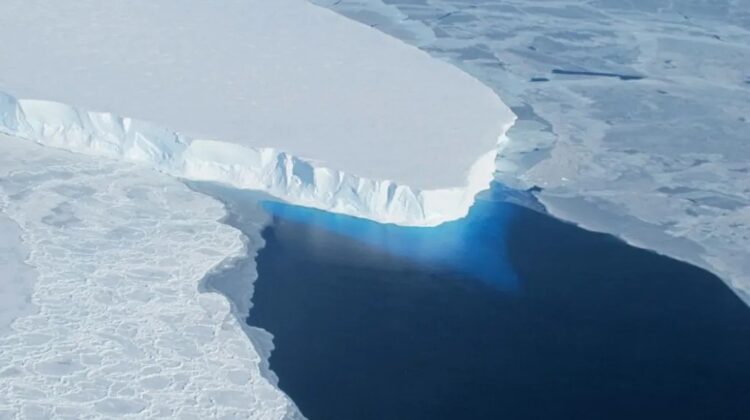
The Thwaites glacier in western Antarctica, dubbed the “doomsday glacier,” has the capacity to ruin the entire planet. NASA believes that if it melted, it would raise sea levels by 0.5 meters, around the size of the United Kingdom (1.6 feet). More concerning is the likely cascade of ice melt, since the glaciers currently shielded from the rising ocean by Thwaites’ presence would be exposed, resulting in a sea level rise that would sink New York City, Miami, and the Netherlands. It is already receding at an alarming rate, but new study published in the journal Proceedings of the National Academy of Sciences warns that this rate may accelerate as more damage is discovered to compromise the ice shelf’s stability.
The researchers used multisource satellite photos to analyze how increasing damage to the ice shelf affected its strength, tracking how parts cracked and fragmented away from the glacier’s edge. The study concentrated on the rapid formation of damaged areas in the shear zones of the Pine Island and Thwaites ice shelves, where the glacier meets the sea. These damaged areas are made up of exposed cracks and crevasses where moving ice meets rock and are frequently the earliest signs of catastrophic ice shelf disintegration.
Their modeling found that when the ice shelf deteriorates, it triggers a feedback process that weakens it even more, hastening the development of thinning patches and fissures until parts of ice break away. The study provides a new perspective for scientists working with sea ice, emphasizing the need of taking these feedback processes into account when projecting sea level rise and assessing the stability of remaining ice shelves.
The Thwaites glacier is significant beyond its own survival because it serves as a barrier between the ever-warming ocean and other glaciers. If it totally melts, it might cause a cascading effect, bringing down ice masses over western Antarctica. The subsequent release of water into our oceans could cause sea levels to rise by over 3 meters (10 feet), wreaking havoc on coastal cities around the world.
“The findings of this study show that damage feedback processes are important for future ice shelf stability, grounding line retreat, and Antarctica’s contribution to sea rise,” the authors concluded. “Moreover, they highlight the importance of including these feedback processes, which are currently unaccounted for in most ice sheet models, in order to enhance sea level rise estimates.”

Leave a Reply